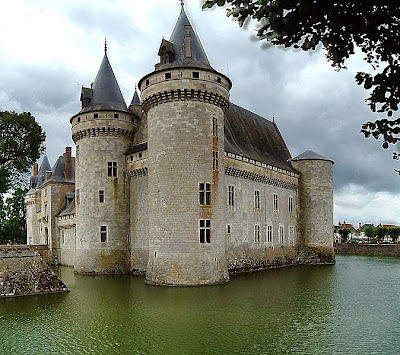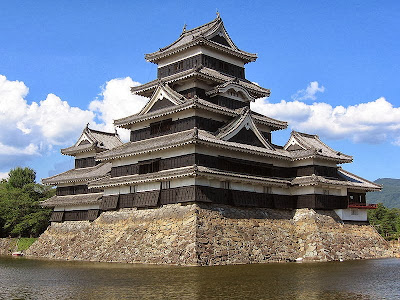 |
| Bamburgh Castle, Northumberland |
Many castles were originally built from earth and timber, but had their defences replaced later by stone. Early castles often exploited natural defences, and lacked features such as towers and arrowslits and relied on a central keep. In the late 12th and early 13th centuries, a scientific approach to castle defence emerged. This led to the proliferation of towers, with an emphasis on flanking fire. Many new castles were polygonal or relied on concentric defence – several stages of defence within each other that could all function at the same time to maximise the castle's firepower. These changes in defence have been attributed to a mixture of castle technology from the Crusades, such as concentric fortification, and inspiration from earlier defences such as Roman forts. Not all the elements of castle architecture were military in nature, and devices such as moats evolved from their original purpose of defence into symbols of power. Some grand castles had long winding approaches intended to impress and dominate their landscape.
Although gunpowder was introduced to Europe in the 14th century, it did not significantly affect castle building until the 15th century, when artillery became powerful enough to break through stone walls. While castles continued to be built well into the 16th century, new techniques to deal with improved cannon fire made them uncomfortable and undesirable places to live. As a result, true castles went into decline and were replaced by artillery forts with no role in civil administration, and country houses that were indefensible. From the 18th century onwards, there was a renewed interest in castles with the construction of mock castles, part of a romantic revival of Gothic architecture, but they had no military purpose.
Data refer :http://commons.wikimedia.org
Data refer :http://en.wikipedia.org/wiki/Castle
 |
| The Tower of London |
 |
| Arundel Castle, West Sussex |
 |
| Windsor Castle |
 |
| Chateau de Pesteil |
 |
| Chateau de Trécesson |
 |
| Fort La Latte en Bretagne |
 |
| Chateau de Sully sur Loire |
 |
| Schweriner Schloss |
 |
| Schloss Neuschwanstein |
 |
| Marksburg |
 |
| Castle of Fénis |
 |
| Castle of Manzanares el Real, Madrid |
 |
| Maschio Angioino in Napoli |
 |
| Kilkenny Castle |
 |
| Ordensburg mit Kirche in Poland |
 |
| Gniew |
 |
| Maruoka Castle in Japan |
 |
| Matsumoto Castle in Japan |
 |
| Himeji Castle in Japan |
 |
| Visegrád castle |